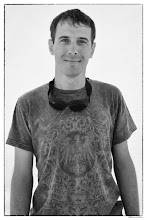 Here's the scarab I mentioned before - I scanned the original with the MDX-20 and cut a new one out of machinable wax. It was finished with a 1/16" ball-nose end mill, which did a surprisingly good job of reproducing small details. It's also a lot more resistant to breaking than the smaller, more expensive tools I'm learning to use. So far I've broken two 1/64" end mills, both in their first 60 seconds of operation.
Here's the scarab I mentioned before - I scanned the original with the MDX-20 and cut a new one out of machinable wax. It was finished with a 1/16" ball-nose end mill, which did a surprisingly good job of reproducing small details. It's also a lot more resistant to breaking than the smaller, more expensive tools I'm learning to use. So far I've broken two 1/64" end mills, both in their first 60 seconds of operation. Here's another experiment. It's a model of Mount St. Helens, based on USGS digital elevation models. I'm sure there must be an easier way to generate stereolithography files from DEMs, but for this test I had to make a VRML file and convert it to STL format using an evaluation copy of Rhino.
Here's another experiment. It's a model of Mount St. Helens, based on USGS digital elevation models. I'm sure there must be an easier way to generate stereolithography files from DEMs, but for this test I had to make a VRML file and convert it to STL format using an evaluation copy of Rhino.I still haven't had much opportunity to mill PCBs with the machine, but I'm still finding other useful things to do with it. Today I fabricated a replacement lens for my Maglite out of Lexan. I figure that saved me at least $2. Or rather, it would have if the original lens had actually been broken. But at least I've got a spare, just in case.

No comments:
Post a Comment